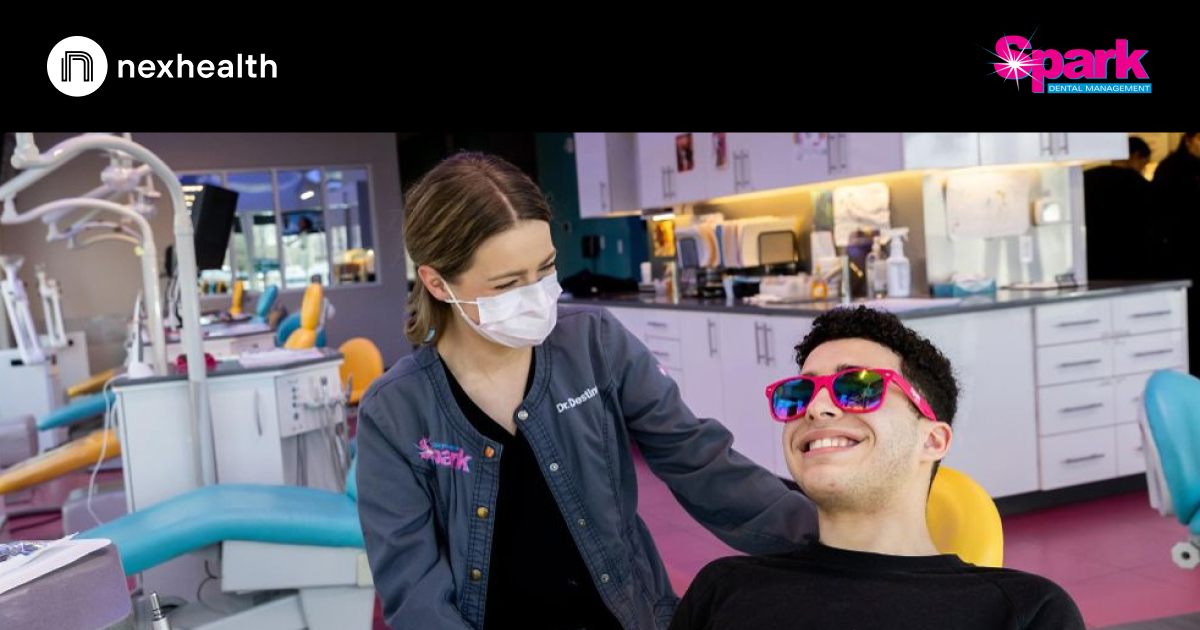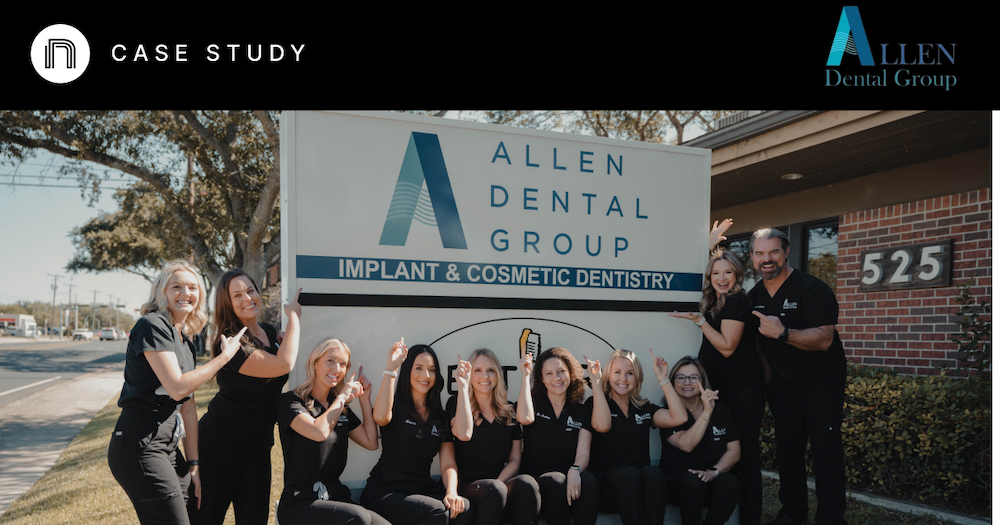
Ultimate Guide to Improve Patient Acquisition & Retention
Learn all there is to know about patient acquisition, including common pitfalls, strategies for success, and the best solutions to help you do the job.
The methods of patient acquisition have evolved over the years, and today the primary focus is making sure that your practice has a strong online presence. You can enable their discovery process by creating an easy-to-navigate and informative website, sharing patient testimonials, and giving them the option to schedule their visits.
By doing a deep dive into all aspects of patient acquisition, our aim is to guide you through your practice’s challenges with patient acquisition and come out stronger and better equipped to grow your practice.
- What is patient acquisition?
- Patient acquisition vs. patient retention - what to prioritize
- How to improve patient acquisition process + common pitfalls
- 10 strategies for acquiring new patients
- Guarantee patient acquisition with a streamlined patient intake process
- What to look for in a patient acquisition solution
- Top 5 patient acquisition solutions to gain new patients and grow your practice
Let us begin by familiarizing ourselves with the basics of patient acquisition.
What is patient acquisition?
Patient acquisition is a strategy that healthcare practices implement to bring in more patients, grow their patient base, and drive revenue. This includes online and offline marketing efforts that create awareness about your brand and services that convince patients to choose your care.
Patient acquisition efforts today are about more than just handing out flyers or running ads that list your services. Rather than simply telling your prospective patients that you’re better than your competitors, showcase your skills, customer service, and personality on social media to really stand out and show them what you - and your practice - are all about. Investing in your digital presence gives your audience an inside look at your skills as a healthcare provider, and will make them feel more confident choosing you.
Why improving patient acquisition is so important
From a business point of view, your goal must be to maintain consistent year-on-year revenue growth, which can only be achieved when more patients walk through your door. New patient acquisition will give your practice the opportunity to grow in volume, see better margins, and stay relevant among your competitors.
Improving patient acquisition strategy is also important from a long-term perspective. While today you may be happy with your practice’s growth and revenue numbers, bringing new patients on board opens up opportunities to offer new services, understand the changing needs of the market, and amplify your brand.
Patient acquisition vs. patient retention - what to prioritize
While patient acquisition and patient retention seem like two separate tasks, they are actually two sides to the same coin and are both essential components of practice growth. Without retention, your patient acquisition efforts will be fruitless. Both patient acquisition and retention must be a part of your core marketing strategies to succeed and stay ahead of the game.
While both have their own challenges, patient acquisition has a significantly higher cost attached to it, making it an expensive proposition. For this reason, it’s extremely important to capitalize on new patients by optimizing your patient retention efforts and keeping patients engaged with your practice. Ultimately, patient retention allows you to increase the lifetime value of a patient, and maximize the impact of your practice acquisition efforts.
How to improve patient acquisition + common pitfalls
The patient acquisition process begins from the first time a potential patient interacts with your practice, whether online or offline. As a practice that is looking to acquire new patients, it is your responsibility to leave them with a quality experience that urges them to schedule their next visit with you.

Traditionally, patients came from word-of-mouth referrals and print advertising. Today, there are multiple avenues to market to prospective patients, including your website, social media platforms, review sites, and more! It’s best to draw patients in from as many channels as you can, funneling them all towards the patient intake process so that you can onboard them as a patient.
Once you’ve managed to grab their attention, you want to capitalize on their interest and get them onboarded with minimum resistance. Offering an open line of communication, great customer service, and exceptional bedside manners as a healthcare practitioner is extremely important to strengthen their faith in their decision to choose your care over other practices.
Common pitfalls of traditional patient acquisition
Traditional patient acquisition refers to reaching out to patients via non-digital marketing efforts and getting them onboarded via paper forms and document submissions. In today’s digital age, many practices use traditional patient acquisition methods, which is much more time-consuming than modern methods. If your practice is one of them, then you will be familiar with the common pitfalls described below:
- Dependent on your office hours: Most likely, your patients’ and your own office hours will coincide, making it difficult for them to remember to call your office to book their visit. If they can conveniently schedule their visit after hours, you’ll see a higher number of bookings.
- Make a phone call to book a visit: If the only way to schedule an appointment with your practice is via phone call, then this can be a big problem, as your patients may procrastinate, forget, or hesitate to call your office. This is especially true for non-urgent care patients who may not prioritize their appointment before other commitments.
- No confirmation/reminder sent: Traditional methods of booking appointments expect patients to save the details of their visit in their calendar or notebook so that they don’t forget about it. In the busy lives that your patients lead, it is very likely that some appointments will get missed, leaving your practice adversely affected.
- Slower growth: With a lack of online presence, your practice will be harder to find by potential patients, making them choose one that advertises their practice better. Not being able to keep up with your competitors could result in lower growth rates that can cause your practice to struggle.
- Staff overburdened with paperwork: Maintaining paperwork in the digital era is outdated and inefficient. Storing patient health information securely as physical files may require a lot more protocols that can take up a significant part of your staff’s day.
- Poor patient experience: Between manning the phone, maintaining paperwork, and tending to patients visiting your office, delivering a great patient experience may seem like a chore to your staff, which may make your patients feel unwelcome and not valued.
If your practice has encountered these problems one too many times, then it’s time for a change! Learn how NexHealth can transform your practice with its bi-directionally integrated patient experience solution that is designed to acquire, retain and digitize your operations.
10 strategies to acquire new patients
New patient acquisition is a multi-pronged strategy that needs to be evaluated from time to time to measure its effectiveness. Let’s delve into strategies that you can apply to improve your patient acquisition and grow your practice.
1. Self-scheduling
Any patient visit on your website or social media should lead patients to a button that lets them schedule a visit with your practice online. By offering a self-scheduling option, you ensure there is minimum resistance to booking while also reducing dependency on your staff. Your staff is no longer burdened with keeping track of patient schedules and your practice calendar, allowing them to focus on building a solid experience for new and returning patients.
2. Focus on your online presence

Over 30% of patients find their healthcare provider online, and that rate is growing fast. It’s important to have an up-to-date website and online local business listings that reflect the services you offer and any promotions you may have. It allows patients to schedule their appointments online with an integrated online scheduling solution. For help improving your online presence, speak to one of our partners like Delmain.
3. Keep your existing patients happy
If your current patients are happy with the care and experience that your practice is delivering, they won’t hesitate to talk about you to their friends and family. In fact, 31.2% of people reach out to their friends and family for recommendations for choosing their healthcare provider, so keep a tab on your current patients’ opinions and make sure that they are being taken good care of.
4. Reputation Management

Since most of your patients read online reviews before choosing their doctor or dentist, managing your reputation online is pivotal to running a successful practice. While online reviews can be good or bad, you can learn valuable insights from what your patients like about you, what is important to them, and things that can help you do better. By quickly responding to the negative reviews, you let your patients and audience know that you’re listening and that their feedback is important to your practice.
NexHealth sends automated surveys at the end of an appointment that contributes to positive Google, Facebook, and Yelp ratings. This feedback can also help you make ongoing improvements to your practice.
5. Create valuable content
Developing relationships with your patients beyond their appointment can help build loyalty, trust, and awareness. By creating a blog, sharing informational videos, and sharing updates on social media, new patients will more easily find and trust your practice.
6. Empower your audience to make the decision
Patients today like to research and learn everything before signing up for something, instead of being dependent on your staff. Empowering your patient with all the information they need to confidently sign up or book a visit will make them feel comfortable with their decision.
7. Reach the right target audience
While devising your online marketing strategy, your campaigns will only be effective if they are reaching the right audience. For example, as a pediatric dentist, your social media posts must target young mothers between the ages of 25-40, residing within a 5 km radius of your clinic. Your email marketing campaigns can carry a referral code, giving your current patients a discount on their next visit, if they are able to help you connect to other mothers in their circle.
8. Promote special offers and discounts online
All customers love deals, and medical patients are no exception. Sharing promotions and discounts on Google Maps and Yelp can help motivate new patients to try out your practice rather than competitors. These don’t have to be expensive, either! We’ve seen free X-Rays be a great driver of patient growth and increased production.
9. Easy onboarding
The final step to improve patient acquisition is getting patients to sign up and finish the onboarding process. By offering a HIPAA-compliant digital intake form that can be accessed from their smart device, patients can fill out their details, upload their documents, and digitally sign the form, allowing them to finish this from the comfort of their own homes.
10. Create an offline marketing and awareness program
Your online marketing strategy must be supported by an in-person brand awareness campaign for your local community to recognize you and learn about your practice. Your practice could mail out flyers, participate in local charity events, and advertise in local print media to help build your brand recognition in your community.
Guarantee acquisition with a streamlined patient intake process
Your improved patient acquisition program has to be supported by an onboarding process that gives your patients a glimpse of how organized your practice is. A streamlined and hassle-free intake process eliminates any barriers to signing up and helping get the patient onboarded.
Optimize your onboarding with digital patient intake forms
Your intake form is the touchpoint that officially welcomes patients to be a part of your practice, giving you an opportunity to deliver a fantastic experience and reassure them of their decision. Digital intake form links can be sent via text or email message to the patient, giving them the convenience of filling out their information from the comfort of their device.
From the operations side, your staff no longer has to sort through piles of paperwork or make any manual data entries, as they have everything organized in one place. If you opt for a digital patient intake process, it will seamlessly integrate with your practice management system for efficient data collection. That way, you can simply get to work on your patients’ care!
What to look for in a patient acquisition solution
In today’s digital age, there are a number of ways to acquire patients, resulting in a variety of solutions, many of which are specialized. While you can get solutions that perform these individual tasks, it’s typically much more efficient to rely on a solution that lets you manage your entire acquisition strategy from one place.
Before we compare solutions, we’ll discuss what features are common to improve patient acquisition, and which solutions you should consider when making your decision.
{{guides_patient-acquisitions_solution-features="/resource-content-components"}}
Top 5 solutions to improve patient acquisition and grow your practice
If your current patient acquisition efforts are falling short, then you must reconsider your practice growth strategy and integrate a patient communication and experience tool that can help you improve your results. Check out the following solutions that can help you achieve your practice goals:
1. NexHealth

Best for: A bidirectionally integrated system that instantly syncs with your practice calendar
NexHealth is a leading patient experience tool that helps you convert web visitors into patients. Practices that use NexHealth are able to bring in 15-45 new patients every month with real-time scheduling embedded on website, social media, and text/email messages - all of which instantly sync with your practice calendar.
The online scheduling feature that NexHealth offers is fully customizable and allows your patients to see your availability in real-time to book their visit on-demand from any location or device. NexHealth’s team of product experts can help implement both your calendar of record and your EHR system – no matter how complex your schedule looks.
2. Marketing 360

Image Credit: Marketing 360
Best for: Access to a full-service marketing agency to guide you through your online marketing process
Marketing 360 helps you build a dental platform to manage and grow your practice. Along with marketing services, Marketing 360 also has a suite of tools such as online forms, appointment scheduling, payments, CRM, and more that allow you to focus on caring for your patients.
3. Roadside Dental Marketing

Image Credit: Roadside Dental Marketing
Best for: Creating dental websites
Roadside Dental Marketing is a full-service agency that helps you with strategies and building custom dental websites, branding, and design. With specific ROI-driven strategies for multi-location, startup, and specialty practices, there are customizable packages for you to choose from.
4. Legwork

Image Credit: Legwork
Best for: Google search advertising
Legwork is a growth marketing platform for the healthcare industry that helps your practice build digital touchpoints throughout the patient journey. The LEGWORK PAPERLESS technology helps you tweak your online scheduling form, add custom questions, and include your branding for a harmonious digital experience.
5. Adit

Image Credit: Adit
Best for: Dental website design
Adit is a dental marketing agency that specializes in SEO and SEM services that helps you with your online visibility. Helping you with cross-platform support, Adit builds your website so it looks great on any device and writes unique content that is tailored to your specific needs.
That does it; you should have everything you need to acquire new patients and grow your practice. Try the strategies provided, and test which solutions have the greatest impact to see your practice improve.

_BestEstimatedROI_Roi.png)
_BestSupport_QualityOfSupport.png)
















.png)



.svg.png)




And I've used at least 6 others." - Shaye, Falmouth Dentistry